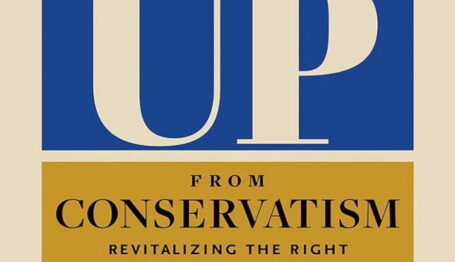Special Report
The State of the Left: Bucking the Party System


The State of the Left (full series)
The Movement Evolves | Bucking the Party System | Donors Take the Reins | Technological Revolutions
Nonprofits Attack
That’s an overview of sorts. Now let’s look at the phenomena historically and dig into some details. One could blame Karl Rove: His success defying the odds and securing re-election for President George W. Bush in 2004 is critical in the formation of the Regressive Resistance. The Left’s megafunders (most prominently George Soros and the now-deceased Peter Lewis of Progressive Insurance) poured tens of millions into the campaign, PACs, and advocacy groups to beat Bush. The day of the election, early exit poll numbers showed that Kerry would win. And then the next morning Bush had won four more years (and the legally meaningless “popular vote”); Rove and his get-out-the-vote work had boosted Bush’s numbers across important demographics—blacks, union households, women, Hispanics.
This startling upset was nothing compared to the 2016 election of President Donald Trump. Nobody dreamed Trump—who never held elected office—would beat the former First Lady, former Secretary of State, and former Senator from New York, Hillary Clinton. “The Resistance” as this reinvigorated Left is calling itself, has spared no expense or resource. Embittered liberal billionaires continue to throw money at the “problem” of Americans having voted for President Trump.
Back in 2003, an informal group of donors looking to defeat Bush coalesced into an informal coalition called the Phoenix Group—rising, no doubt, from the ashes of the “stolen” 2000 election. These folks began giving millions to liberal candidates and 527 political committees, but alas, 2004 still ended in humiliating failure. So, in December 2004, a small group of wealthy donors met in San Francisco. George Soros, Peter Lewis, savings and loan tycoons Herb and Marion Sandler, and a few others met to gripe about what one called “our Pearl Harbor” and how best to respond.
In April 2005, their response began in earnest. A larger group of donors—around 70 millionaires and billionaires—met in a secret, long-term planning session in Phoenix, Arizona. Three-quarters of the members voted that this “Democracy Alliance” should not “retain close ties to the Democratic Party.”
Some former Clinton officials were there, too; the most important was the attorney Rob Stein. He had been an evangelist of sorts among this group, showing them a famous PowerPoint presentation, “The Conservative Message Machine’s Money Matrix,” which featured groups like the Bradley Foundation, AEI, Heritage, and so forth.
He credited conservatives’ electoral success to four decades of conservatives’ long-term investments in ideas and institutions. “Perhaps,” he said, “the most potent, independent, institutionalized apparatus ever assembled in a democracy to promote one belief system.”
Later, Stein would recall “an unbelievable frustration, particularly among the donor class . . . with trying to one-off everything—with every single one of them being a single, ‘silo’ donor and not having the ability to communicate effectively with a network of donors.”
Now whether Stein was correct that the Right had been outspending the Left on culture-shaping intellectual institutions is very open to question—he didn’t count little things like the Ford Foundation or Harvard—institutions which set intellectual trends across America! But the donors bought what he was selling. As one of our Capital Research publicationsfrom a decade ago put it:
the [Democrat] party had become a top-down organization run by professional politicians who cared little about donors’ concerns. [Stein] was convinced that the Democrat Party’s hierarchy had to be turned upside-down: Donors should fund an ideological movement that would dictate policies to the politicians [Foundation Watch, Jan. 2008].
Similarly, the party’s activists were “fed up with perceived Democrat dithering and were demanding more say.” One of the most important new groups, which was perhaps the true beginning of the Left 2.0, was MoveOn.org, born out of the fight to keep Bill Clinton in power. One of its young activists insisted in 2005: “Now it’s our party: We bought it, we own it, and we’re going to take it back.”
Of course, where it was really going to take the party was further to the left. A good insider’s account of this period comes from Matt Bai, a writer for Yahoo News, in his book The Argument: Billionaires, Bloggers, and the Battle to Remake Democratic Politics.
The Democracy Alliance continues to this day, a shadowy and sometimes bickering group of big-money leftists who have channeled we don’t know how much money—it’s somewhere in the hundreds of millions—to a couple dozen groups, mostly nonprofits. Some but not most of that money has flowed through the Alliance’s official entity, which is a “taxable nonprofit” incorporated in Washington, D.C., but mostly the Alliance serves as a place to strategize with fellow donors and hear pitches for private money from approved groups. It’s not very different from the much-maligned donor seminars held by Freedom Partners and the Koch Network.
As Stein describes it, the Alliance is a “gathering place,” “learning environment,” “debating society,” and “investment club.” Members of the Alliance must pony up initiation fees and promise to send at least a couple hundred thousand dollars a year into approved groups. The Alliance legal status, of course, means there’s no financial disclosure—even though most of these donors have pumped a lot of money into the fraud of “campaign finance reform.”
In the next installment of The State of the Left, learn how the Democracy Alliance set the tone for the Regressive Resistance.



